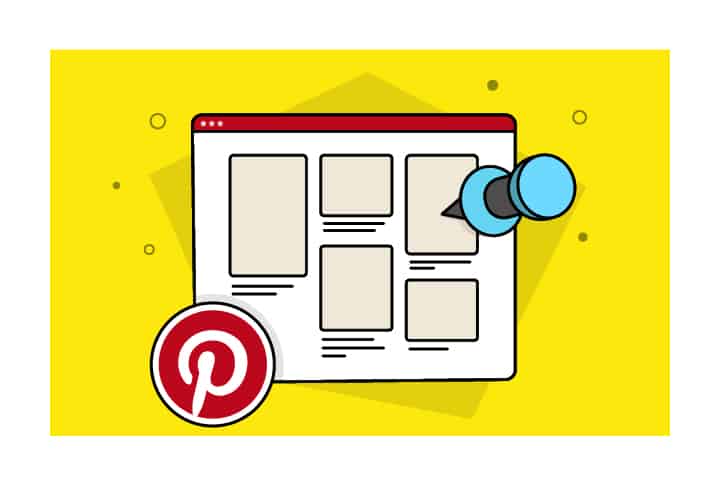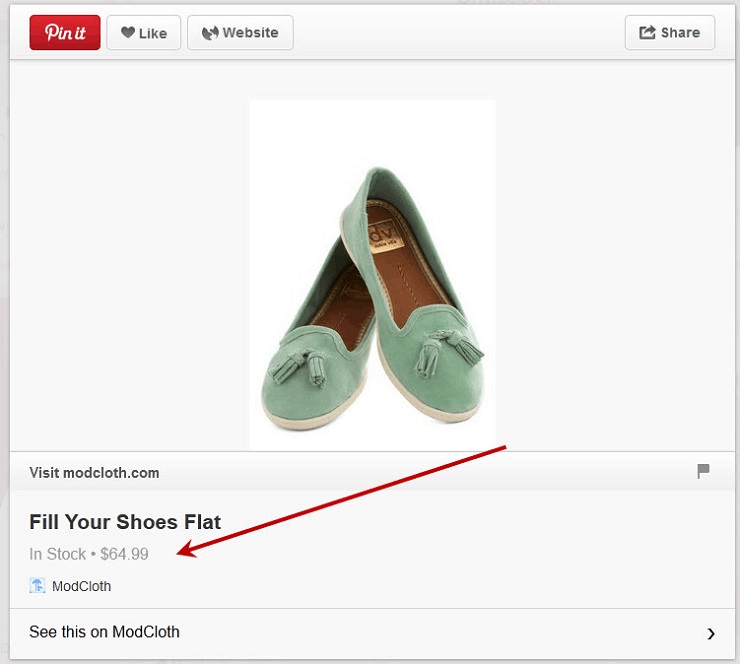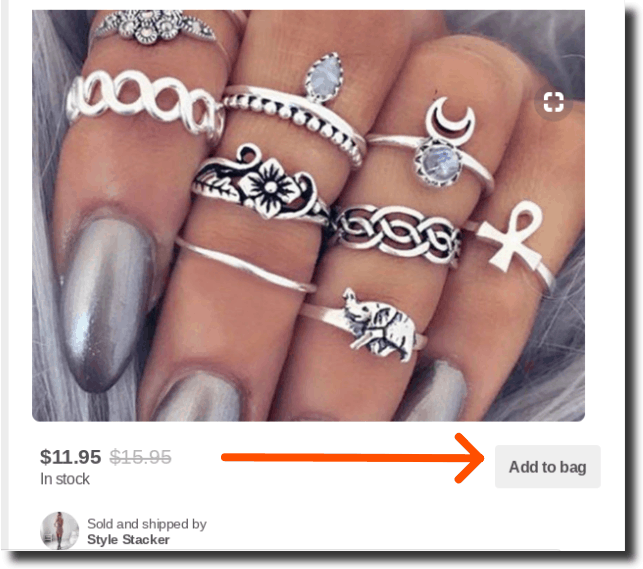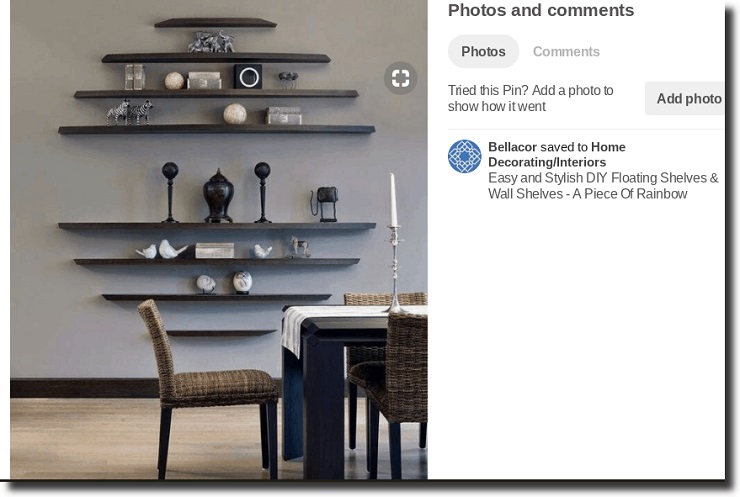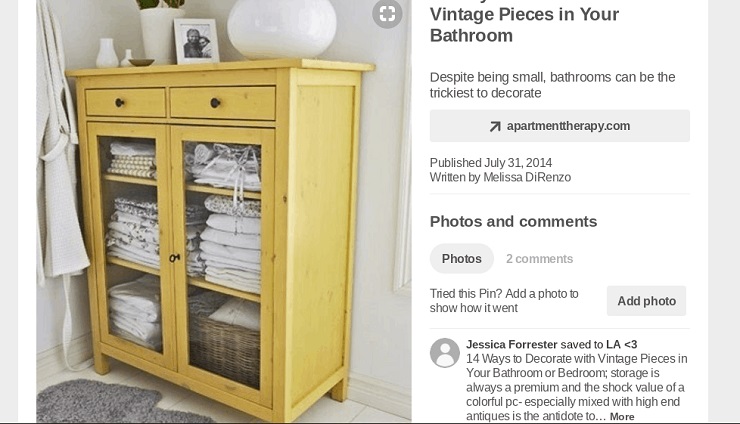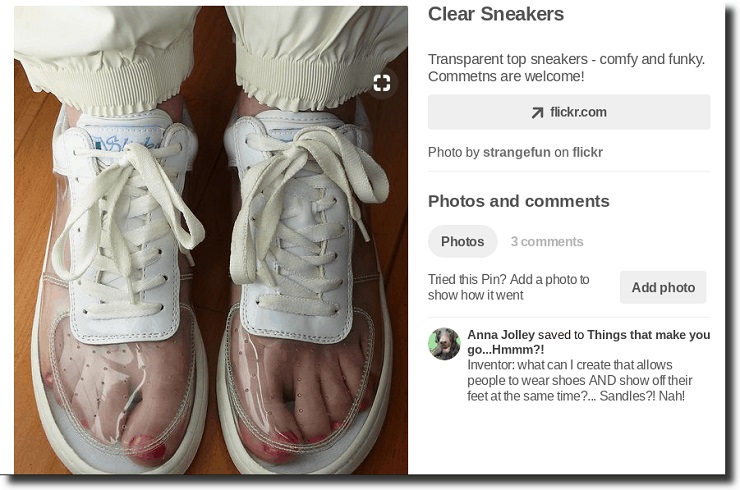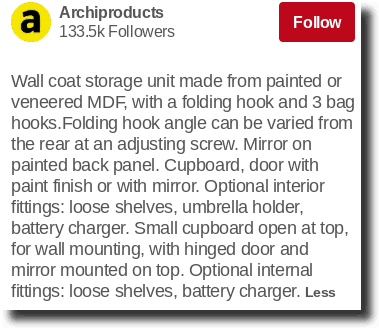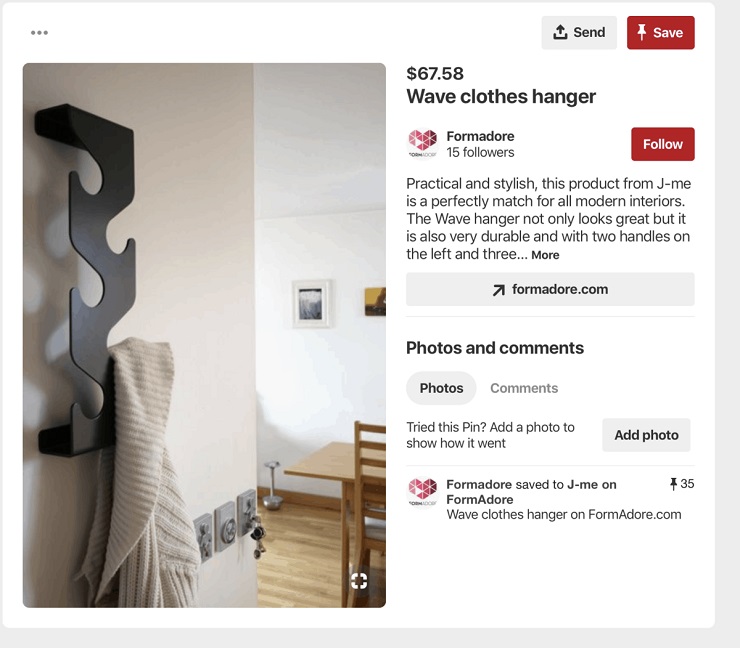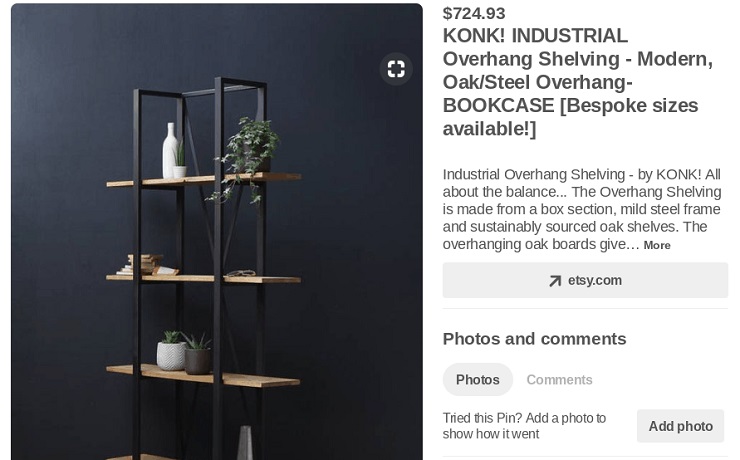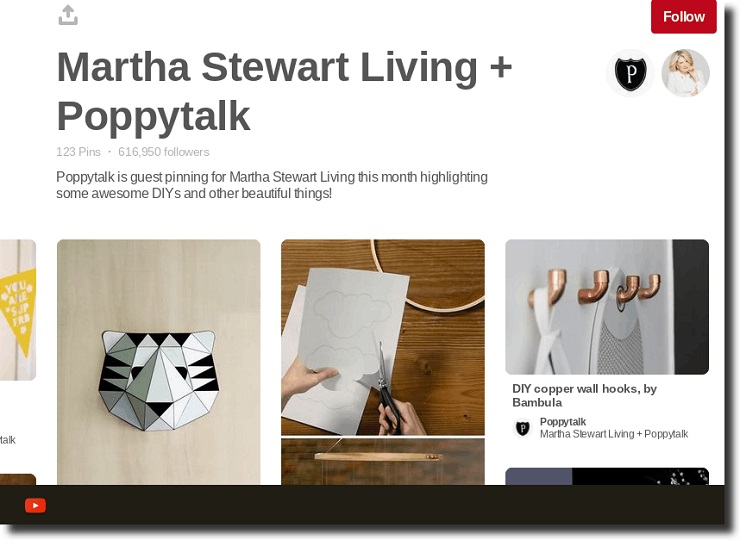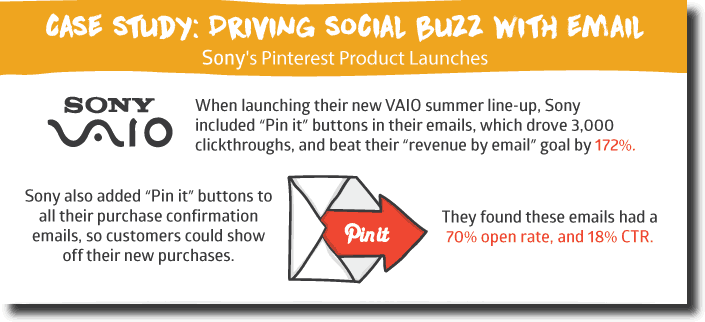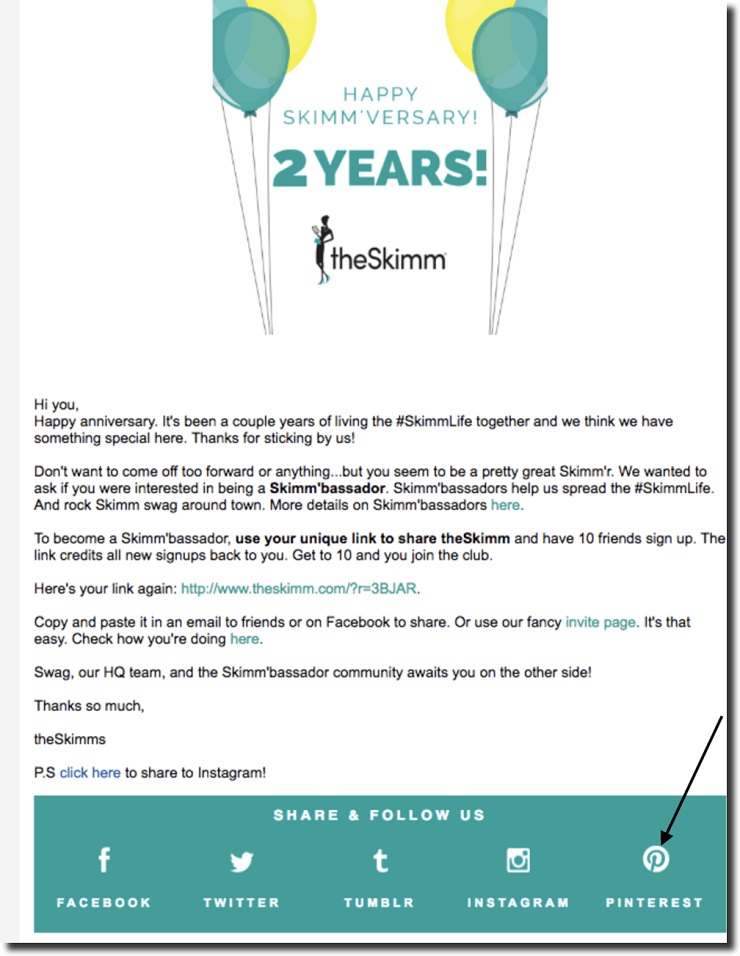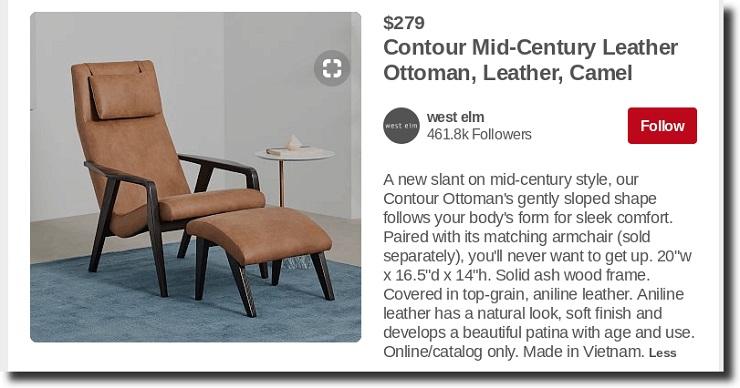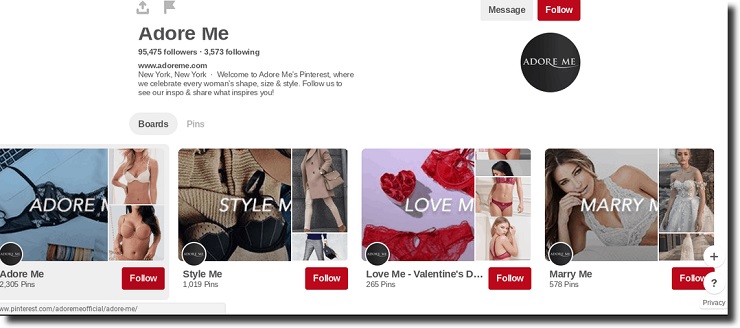Ever wondered what that little red cursive “P” that keeps popping up everywhere is? It’s all over websites and design ideas littered across the internet. It pops up here, there, and everywhere.
That’s right—it’s Pinterest. And whatever your impression of this social media platform is, chances are, it’s much more than that.
You might be quite familiar with what Pinterest is, or you might be totally clueless. Either way, ever wondered where it ranks among social media outlets when it comes to generating daily referral traffic?
Pinterest actually ranks third in generating daily referral traffic. That means it could be the secret sales weapon you’ve been underestimating all this time.
With its ability to create links between product pages and websites, showcase your amazing products, and create networks that will see your exposure increase, Pinterest and ecommerce go hand in hand, and can team up to create one hell of a sales funnel for your ecommerce business.
Whether you consider yourself a master pinner, or have never set foot on the site, let’s take a closer look at how to use this powerful service to increase exposure and sales for your ecommerce businesses.
Sharing is Caring: Unlock the Power of Pinterest
Before we get started, make sure you set up a business account with Pinterest.
Don’t worry, business accounts can be created in addition to personal accounts, meaning you won’t have to ditch that awesome account you’re using for your wedding or kitchen remodel. And if you’ve already got a large following on your account, you can also keep them by converting it to a business account—if you want to.
The ‘Share on Pinterest’ Button
If you want to maximize Pinterest for business, the “Share on Pinterest” button needs to be added to your website. The more people who pin content from your site, the more advertising you’ll have, and the more advertising you have, the more links you’ll have back to your website and product pages, meaning a substantial increase in exposure and business.
It’s a numbers game out there, and you want people hitting that share button as much as possible.
Screenshot from online furniture store, jet. Making the “share” button visible on your product pages is key to increasing exposure.
Product Pins
Pinterest and ecommerce go hand in hand, due to the ability to market products and services on the platform. Product Pins provide a link for users to be taken directly to your website where they can make a purchase.
While a user can’t directly buy your product through these pins—that’s only through Buyable Pins—they can get information on pricing and availability. Product Pins make it easier for Pinners to see information about products you sell, and include pricing, availability, and the link to find your products. You can find more information about Product Pins here.
This Pinterest screenshot via Trisoft shows an example of a Product Pin. Notice the information provided in the bottom left corner showing the price of the product and the business it can be purchased from.
Buyable Pins
Users can purchase your products through Pinterest Buyable Pins, which allow customers to move from a pin to a purchase with ease. You can also promote these pins on Pinterest, making it much easier for customers to discover your products on the service.
An example of a Buyable Pin via screenshot from Pinterest. See how the image includes the “Add to Bag” option meaning users can purchase the product shown without the need to be linked elsewhere.
As a merchant, you’ll have to apply and be approved for Buyable Pins. Once approved, Pinterest users will see your Pins with an “Add to Bag” option attached to them. When users click “Add to Bag,” they are taken directly to a shopping cart page which allows them to checkout right then and there. Easy!
This screenshot via Pinterest shows the page a customer will be taken to when they click the “Add to Bag” button.
You don’t need a specific number of followers to get approved for this but you do need to apply for Buyable Pins through a shopping platform partner, such as Shopify or BigCommerce. For assistance in the setup of these Pins, click here and here.
Promoting your pins will get your brand in front of a bigger audience and according to company statistics, 61% of pinners have made purchases after seeing business content on Pinterest.
Nail Your Content
So you’ve got your integration game on point, now it’s time to focus on ensuring your content is high enough quality to get people excited. Pinterest and ecommerce won’t work well together if your images are not up to par.
Think about it, would a boring and dark image of a product inspire you to make a purchase? Would an image unaccompanied by price or description push you over the line when looking to make a purchase?
Probably not.
When a user shares one of your products on Pinterest, you’ll also want to make sure that a well-optimized image is linked. It won’t do you much good if a grainy, dark, and boring image shows up. Aim to get top quality, high-resolution images (more on this below) pinned on boards to give your brand the stellar representation it deserves.
Let’s take a look at the best strategies for ensuring your content gets the job done and maximizes your sales potential.
Use Well-Lit, Tall, High-Resolution Product Images
It seems obvious, but not all ecommerce businesses get this right. For the win, go for images that are tall enough to show your products in their entirety, are clearly lit, and clearly display the most prominent features.
Tall, well-lit images are perfect for giving potential customers itchy trigger fingers when it comes to purchasing.
Screenshot from Pinterest featuring a strong, well lit image, short description, and a clear link back to Apartment Therapy. This makes things easy for the user.
Example of a screenshot via Pinterest. Too close, dark, and ultimately a ridiculously silly pair of shoes. As funny as this example may be, darker, less attractive images are unlikely to grab the attention of your customers.
Don’t Overdo Product Descriptions
Keep product descriptions as informative as possible, while remaining clear and concise. For best results, aim to keep things between 200-500 characters.
A short description detailing the most important aspects of a product is best for getting the attention of potential customers.
Include the Price Where Possible
Those magic little “Product Pins” and “Buyable Pins” will help you here. Try not to include the price in the description, but instead right on your pins to make things easier for potential customers. That means they won’t have to do further digging to get more information on your products. If not on Pinterest directly, be sure the link that takes users to your product page clearly shows the price of the product.
An image unaccompanied by a price or description is not necessarily a deal breaker, but if sales conversion is your goal, you’ll want to present users with as much information as possible in order to enable them to make purchases as quickly as possible. A well optimized product image accompanied by a strong description and its price makes things as easy as possible.
This screenshot via Pinterest shows an example of a tall, bright image clearly showing the price and description of the product. A great way to entice a user into making a purchase.
Including the price with a product is another way of making things easier for potential customers to make a purchase.
Become a Socializer: Engage With Your Fans and Followers
The whole point of social media is to be social, right?
Especially when it comes to Pinterest for business, the more reach and followers you have, the higher your chances of making a sale. So be sure to bring your A game when it comes to networking and engaging with your followers.
Networking and Collaborations
Networking with people who have a good reach and influence on Pinterest is a good way to gain exposure. This often happens through partnerships or collaborations.
Pinterest allows you to message other users directly, and while you don’t want to go overkill on reaching out, networking with bloggers or other individuals related to your industry is a good way to get your business out there and leverage others’ followings. But you can’t just ask anyone to partner with you. You must develop a relationship first.
Responding to comments is a great way to begin developing relationships on Pinterest. Going beyond the standard “thank you” comment is a good way to get information back from users about how well you’re doing. For example, you could ask users, “What did you like about this Pin?” or “When you read my article, which points did you enjoy the most?” You may not always get a response, but often you will, and the dual benefit of developing relationships and gaining useful information could be key in developing your presence on Pinterest, and your business.
Once you’ve developed a relationship with another user—particularly if they also have a strong Pinterest following—you can form a collaboration that will benefit both of you. Collaborations can take time to develop, but when they materialize, they can bring a lot of traffic to your store. If you want more details on how to collaborate on Pinterest, check out this resource.
Here is an example of Martha Stewart and Poppytalk collaborating on a Pinterest board:
While you may not be able to land Martha Stewart as a partner, even smaller influencers with followings of fewer than 100,000 or even 10,000 can bring consistent traffic over time.
Add Pinterest to Your Emails
Connecting emails to Pinterest can really help to promote your business and increase sales. For example, why not encourage customers to pin a recent purchase on a board that will be seen by other users and create a snowball marketing effect for your awesome products. You could also include a link that takes customers to a PInterest board featuring more of your products, meaning you’ll keep people interested and involved even after they’ve already made purchases.
Here’s a case study where Sony beat its revenue goal by 172% by adding “Pin It” buttons to their emails:
If it works for Sony, it can work for you too! Including “Pin it” buttons on your purchase confirmation emails is proven to give you added exposure among Pinterest users. Image via Neil Patel
Whether a post-purchase email, or an email marketing products you think that customer might like, including links to Pinterest and your other social media outlets is another way to increase your exposure. This keeps customers up to date with what’s happening on your Pinterest and other social media apps.
Image via Alpha Graphics
Be Discoverable: Drop a Pin on Yourself
Pinterest has become such a great source of referral traffic, due to its profound strength in utilizing SEO.
Leveraging Keywords
When pinning your own content, add descriptive head-term or long-tail keywords to your descriptions to help get you found. As Pinterest itself acts as a sort of product search engine, this can be essential when it comes to optimizing your ability to be discovered.
Head-term keywords are shorter, more broadly used keywords such as “sneaker” or “couch” that are likely to appear in user searches. Long-tail keywords are usually narrower phrases that contain three or more words, such as “white all star women’s sneakers” or “black leather West Elm couch.” If you’re using long-tail keywords, you can reduce the number of head term keywords you use.
When adding keywords to content you pin, don’t overdo it—seven or eight head-term keywords or one or two long-tail keywords should be good enough to get the job done. More than this can take away from other important details, and you don’t want to drown potential customers in word soup that could ultimately put them off buying your products.
In the description below, West Elm used a long-tail keyword (Contour Mid-Century Leather Ottoman) and a few head-term keywords (Leather, Camel). This way, the image can be found when users search using those words.
This screenshot via West Elm’s Pinterest shows a description including keywords combined with basic information about their product. Keeping things short and simple will help optimize your ability to be discovered on Pinterest.
Do some research on potential keywords before you start throwing them into the mix. Certain keywords will do better than others and making sure you implement the strongest ones will make a difference in your ability to be found.
So, how do you conduct this research into finding the strongest keywords possible?
- Make a list of words related to your product that you would use if searching for the product you are selling. Let’s say you’re looking for a pair of shoes—what would you search for? Some examples might be “sneakers,” or “loafers,” or maybe “white sneakers,” or “black loafers.” Creating lists of these potential keywords will help you see things from the perspective of the buyer and let you narrow down words that will be most important.
- Research related search terms. If you’re struggling to expand your list of potential keywords, look at the related search terms that come up in Google results. This will allow you to see exactly what appears when you search for a head term or long-tail keyword. You can also apply this step when searching on Pinterest to see what appears.
- Do some scouting and research your competitors. Now that you’ve narrowed down what keywords may work for your business, do a little scouting and see what words competitors are using—and if that is getting them found on Pinterest. SEMrush is a great service that will show you the top keywords for a domain that you enter.
- Finalize your list of keywords. Once you’ve conducted this research, you’ll have a clear idea of the keywords you’re going to use and the ones you aren’t. The next step is working your selected keywords into your description effectively, and voila! You’re ready to go.
Simple Board Organization
When creating boards featuring your products, try to organize things in a way that makes you easy to find, and even easier to navigate when people get there. Aside from making you look less professional, messy boards will only confuse potential customers, and hurt your ability to be found through searches.
Notice in the example below how Adore Me titles their boards “Adore Me,” “Style Me,” “Love Me,” and “Marry Me.” Apart from the catchy titles, labeling their boards in this way is far cleaner, simpler, and easier to find and navigate than if they titled them “The Best Styles For You,” or “Things to Make Him Adore You.” Long, clunky titles will definitely make you less likely to stand out.
Screenshot from Pinterest showing the main page of Adore Me. Notice how the boards are organized and labeled effectively to optimize SEO.
Seasonality and Timing
Avoid seasonal boards, such as “summer furniture” or “shoes perfect for winter,” unless you plan to reuse them. Otherwise your boards become irrelevant quickly. If you really want to incorporate seasonal boards, make sure the products you display stand the test of time, so they’ll still be in fashion the next time winter rolls around.
To make yourself more discoverable, pay attention to the timing of when you pin your own content. Timing is everything, and pinning your content at peak times such as weekends and weekday evenings will give you a surge in SEO. People have far more time to browse during these times and being active when it matters most will help you pop up at the right times.
Pinterest Analytics: Winning or Losing? Analytics Will Tell You
To use Pinterest Analytics, you’ll need to make sure you’re using a business account. Analytics will provide you metrics about:
- Your profile. Its effectiveness, your impressions, saves, the number of clicks you have, and your all-time statistics.
- Your reach. Analyzing this information will show you who follows your boards, who saw your pins, and anyone who reacted to your content in some way.
- Your website integration. In order to get analytics for your website, you’ll have to claim your website first. When you’ve done this, these analytics will show you what content people like most from your website, impressions, saves, and clicks for Pins linking back to your site.
Understanding this information will help ensure optimization between Pinterest and ecommerce and will ensure your business thrives through the platform. You will gain valuable insight as to the amount of traffic you have bouncing between product pages and will ensure you stay on top of where you are succeeding and where you need improvement.
Unlock The Power Of Pinterest And Ecommerce
Facebook and Instagram are fantastic outlets for driving sales in your ecommerce business, but Pinterest could be the secret ingredient you’ve been looking for.
Creating a commanding presence on Pinterest with the above strategies in mind will help drive traffic to product pages, and display the best parts of your brand to the masses.
Keep in mind, marketing on Pinterest is a marathon, not a sprint—getting to the front of the pack is your first goal, and then maintaining your presence will be key to seeing steady improvement in your sales.
We all know time is money. Acting today instead of tomorrow will make a difference in your success. Do you use Pinterest to advertise your products? Hit me up with your tips or questions in the comments!
